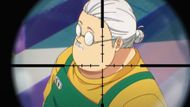The debut of Sakamoto Days in January 2025 came with sky-high expectations and intense anticipation from fans. The hitman-turned-family-man story should have been anime gold, yet TMS Entertainment bore something that felt more like tainted silver.
Opening sequences reminiscent of 2010s productions, static fight choreography, and production shortcuts transformed what should have been a triumphant Shonen Jump adaptation into a masterclass in squandered potential.
Season 2 can save Sakamoto Days, but only via extreme transformation. The July 2025 continuation needs substantial acquisition in animation quality, proper fight choreography, and production matters that match the manga's impressive standards. Without these fundamental changes, the series risks becoming a cautionary tale.
The anticipation of Sakamoto Days was immense. As of June 2025, Sakamoto Days had over 12 million copies in circulation, firmly establishing itself as a top-tier Shonen Jump title. Fans wished for an adaptation that would match the dynamic action sequences and creative choreography that made the source material so compelling. Instead, they received what many feel is a disappointing first impression.

The opening sequence became the first major point of argument. Many viewers defined it as feeling outdated, reminiscent of early 2010s anime rather than meeting modern standards. This directly set a hostile tone that would follow the series throughout its initial run. A slow start led to early skepticism about how well Sakamoto Days would perform as an anime.
Critics have been notably harsh about the animation rate of Sakamoto Days. They have anointed the animation "flat", lacking in the suspense and dynamics that are so crucial to the narrative's action scenes. What sets the manga apart is its top-tier fight choreography — smooth, clear, and visually impressive. The anime adaptation has struggled to put this core appeal on the screen.
From overuse of still frames to quivering shots and animation shortcuts, the series suffers from lazy animation. These technical flaws have been quite noticeable during action sequences, where the anime should be showcasing its strengths. Instead of smooth, dynamic fights, viewers have uncovered static expositions that fail to capture the excitement.
The Studio Controversy and Source Materials of Sakamoto Days

TMS Entertainment's handling of fan criticism has only boosted the controversy shrouding Sakamoto Days. The studio faced backlash for allegedly extracting negative comments from promotional materials, which many fans interpreted as an attempt to silence honest criticism. This approach backfired spectacularly. It occurred to confirm fans' worst fears about the production team's cognition of the series' problems.
The studio's track history with other projects has been jumbled. Known for producing Dr. Stone and Detective Conan, TMS Entertainment’s work on Sakamoto Days signals an exciting new creative direction. Fans have doubted whether the studio truly understands the unique charm of the source material or if they are just going through the motions of adapting another manga.
The series' manga is praised for having some of the finest fight choreography in current Shonen Jump publications. The fight scenes are clever, smoothly executed, and impressively clear in their visual presentation. The manga's ability to balance comedy with extreme action has made it a standout.

The source material equips a perfect blueprint for thrilling animation, yet the adaptation has stumbled to translate these strengths virtually. This disconnect between manga and anime quality has become a major criticism of the series.
Despite the fuss, there are reasons for cautious optimism about the future of Sakamoto Days. The series has exhibited moments of genuine quality, especially in character interactions and comedic timing, with strong characters and clever comedy, this adaptation, even amidst subtle animation and production challenges.
The upcoming Part 2, scheduled for July 2025, will allow the production team to address fan concerns. If TMS Entertainment can learn from the complaint and invest more resources into animation quality and choreography, the series could still achieve its potential.
In conclusion, the future of Sakamoto Days rests on whether season 2 can manage the basic issues that have afflicted the first season. If modifications are made, the series could still execute its potential as a standout action-comedy anime. If not, it may be remembered as an exemplary tale about the importance of proper adaptation and production quality.
